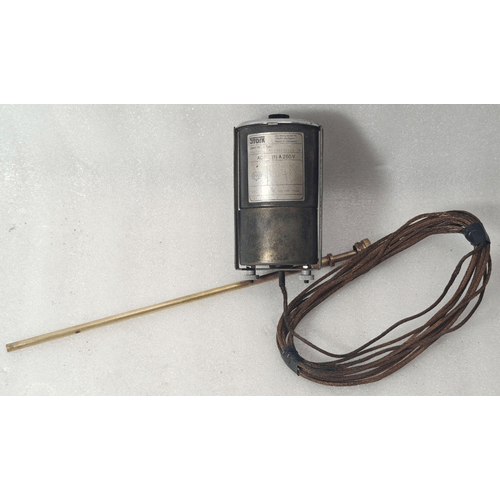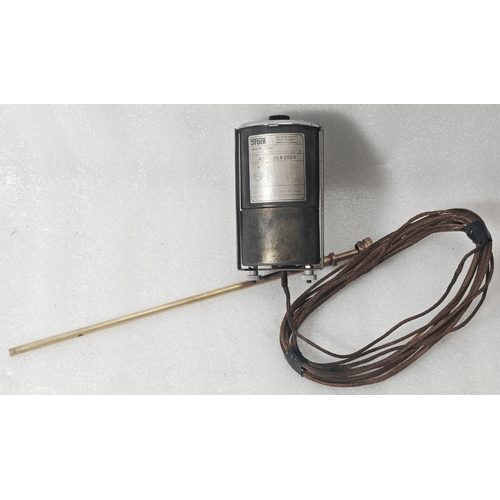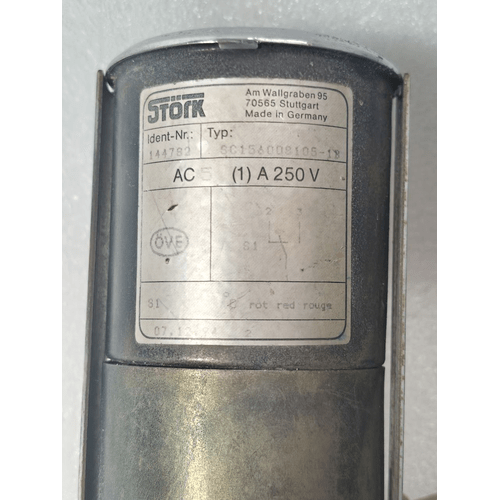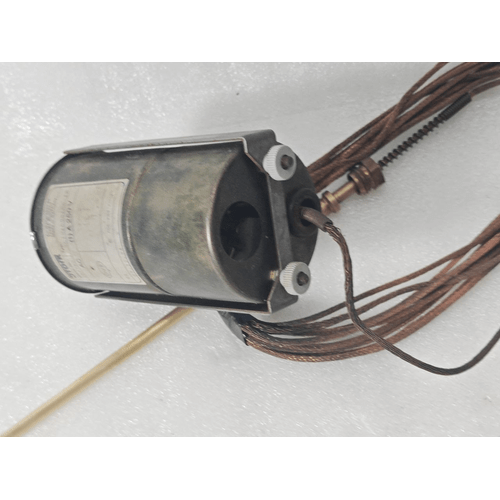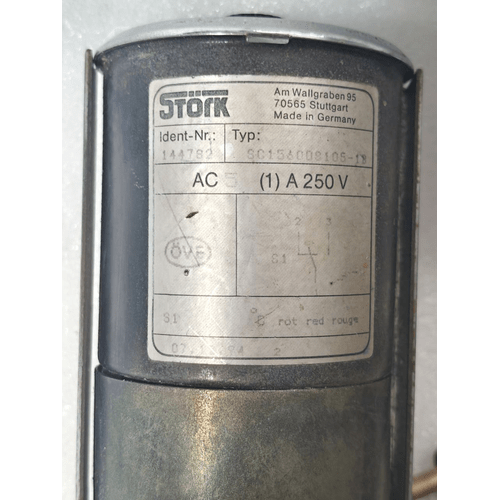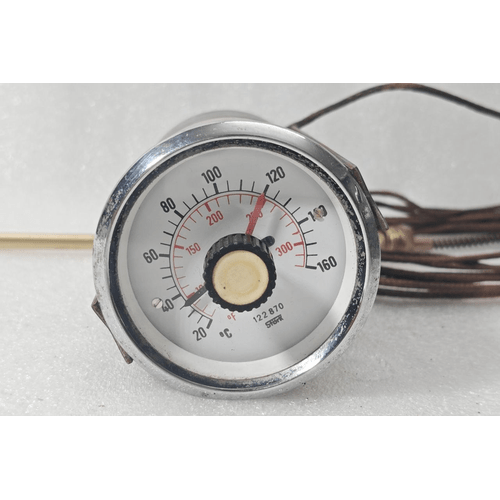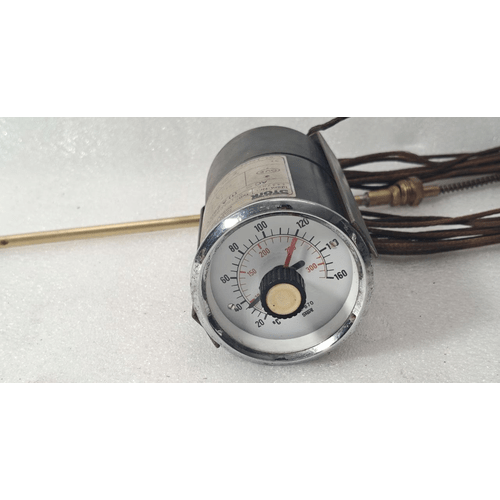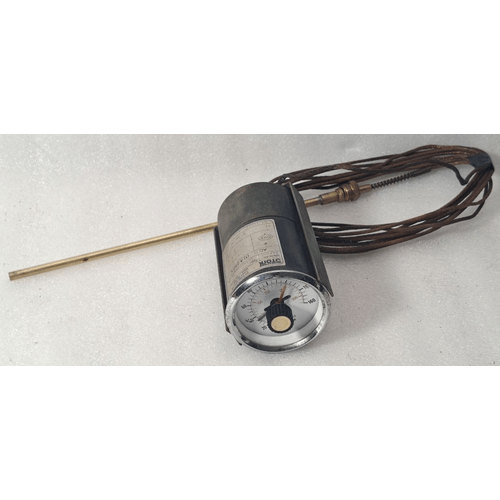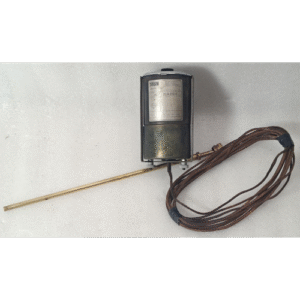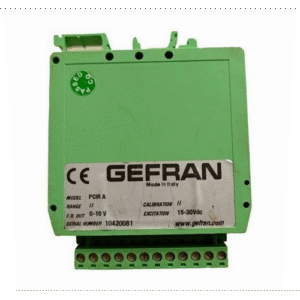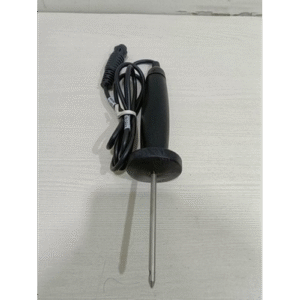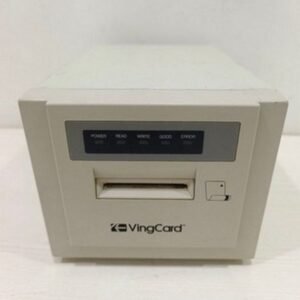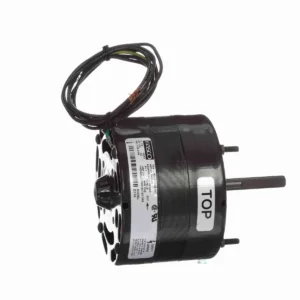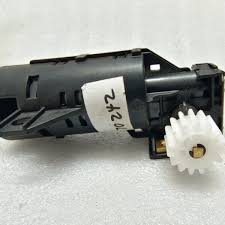- AUTOMATION EQUIPMENT
- BURNER CONTROL
- CAPACITOR
- CARD ENCODERS & READERS
- CONTROL VALVE
- CONTROLLER
- CONTROLS
- CONVERTER
- DRAIN CLEANING MACHINES & TOOLS
- ELECTRIC EQUIPMENT
- ELECTRICAL ITEMS
- FLOW METERS
- GAS DETECTORS & MONITORS
- GENERAL PURPOSE AC DRIVE
- GRAPHOMETER
- HVAC & REFRIGERATION PRESSURE SWITCHES
- HYDRAULIC PRESS
- INK RIBBONS
- LEAK DETECOTR
- LIMIT SWITCH
- METER
- OTHER AIR COMPRESSORS
- PANEL METERS
- POWER MODULE
- SAFTY EQUIPMENT
- SERVO DRIVES & AMPLIFIERS
- TACHOMETER
- TEMPERATURE COMPENSATING
- UNCATEGORIZED
STORK MSW SC156008105-18 AC 250V RANGE 20 TO 160C 18:35
$250.00
| Product Conditioned | NEW |
|---|
This is a 160°C, non-resettable thermal safety fuse designed to permanently cut power to an appliance if it overheats, thereby preventing a fire. It is a crucial safety component that must be replaced with an exact match if it fails.
Free Shipping apply to all orders over $199
Guaranteed Money Back in 30 days return.
24/7 Customer Support
Share:
Hotline Order:
(+101) 5620 - 8155
Email ID:
xstore@support.com
The STORK MSW SC156008105-18 is a thermal cutoff fuse, also known as a thermal fuse or thermal link. This is a non-resettable, one-time-use safety device designed to permanently break an electrical circuit when a specific, pre-determined temperature (160°C / 320°F) is exceeded.
Its primary function is to act as a fail-safe to prevent overheating, which could lead to fire, damage to electrical insulation, or destruction of the appliance it is protecting. The “AC 250V” rating indicates it is designed for use in standard mains voltage applications.
Key Specifications from the Label
-
Manufacturer: STORK (A recognized brand in thermal protection devices)
-
Model / Part Number: MSW SC156008105-18
-
Type: Thermal Cutoff (TCO) / Thermal Fuse
-
Rated Voltage: AC 250V (Can be used in circuits up to 250 Volts Alternating Current)
-
Rated Current: Typically in the range of 10A to 16A for this style of fuse (exact value should be confirmed from a datasheet).
-
Temperature Rating: 160°C (This is the precise temperature at which the fuse will blow.)
-
Temperature Range: 20 to 160°C (This indicates the operating ambient temperature range and the trigger point.)
Key Features and Function
-
One-Time Use: This is a sacrificial device. Unlike a circuit breaker or a resettable thermal switch, it cannot be reset. It must be replaced after it has blown.
-
Precision Trigger: The fuse contains a heat-sensitive pellet that melts at exactly 160°C, releasing a spring mechanism that permanently opens the electrical circuit.
-
Fail-Safe Operation: It is designed to function even if the appliance fails or loses power, as it is a purely mechanical and thermal device.
-
Insulated Housing: The white plastic housing provides electrical insulation and physical protection for the internal mechanism.
How It Works
-
The thermal fuse is wired in series with the circuit it is protecting (e.g., the main power input to a motor or heating element).
-
Under normal operating conditions, electricity flows freely through the fuse.
-
If, due to a malfunction (e.g., a blocked air vent, failed motor, or faulty thermostat), the temperature at the fuse’s location reaches 160°C, the internal mechanism triggers.
-
The circuit is broken permanently, cutting power to the device and preventing a potential fire or catastrophic failure.
Common Applications
This type of thermal fuse is a critical safety component in a vast array of household and industrial appliances that generate heat, including:
-
Coffee Makers & Kettles
-
Hair Dryers & Straighteners
-
Clothes Dryers
-
Microwave Ovens
-
Power Tools (e.g., drills, saws)
-
Transformers & Power Supplies
-
HVAC Motors
-
Industrial Heating Equipment
Important Notes for Replacement/Repair
-
Safety Critical Component: This is a primary safety device. Never bypass a blown thermal fuse. Always replace it with an identical part number and temperature rating.
-
Exact Match Required: The replacement fuse must have the same:
-
Temperature Rating (160°C)
-
Voltage Rating (AC 250V)
-
Current Rating (A) (e.g., 10A, 15A) – this is often part of the model number.
-
Physical Size and Form Factor
-
-
Diagnosis: A blown thermal fuse is often the symptom of an underlying problem (e.g., a failed motor, clogged vent, or stuck relay). Simply replacing the fuse without diagnosing and fixing the root cause will likely result in the new fuse blowing again.
-
Testing: It can be tested for continuity with a multimeter. A good fuse will show very low resistance (a short circuit). A blown fuse will show infinite resistance (an open circuit).
We're here when you need us
Get a Quick Quote
Complete our online form.
Call US
Speak to one of our team.
Live Chat
Send us a message
Speak to one of our team.


